Do people commonly compliment the style and decor of your home? Are you the go-to friend for brainstorming redecorating ideas? Do you find yourself wistfully binge-watching design shows by Chip and Joanna Gaines and a plethora of other HGTV shows on house hunting and remodeling?
If so, you might have pondered becoming an interior designer or an interior decorator. Depending on which of these two distinct career fields you decide to pursue –interior decorating or interior designing – a college degree may be mandatory or merely helpful to have.
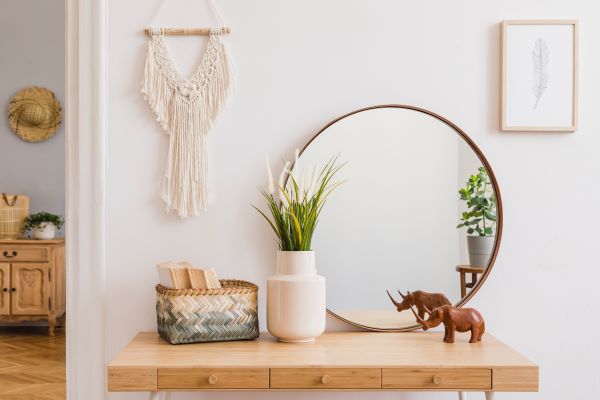
The Differences Between Interior Design and Interior Decorating
People often use the terms “interior decorator” and “interior designer” interchangeably, but these terms don’t mean exactly the same thing. Before you resolve to become an interior designer or an interior decorator, you need to know the distinctions between these career goals and figure out which path is right for you.
Design vs. Decorating
Both interior design and interior decorating are somewhat creative career roles that involve improving interior living and working spaces. However, interior decorators focus on the aesthetics of that space: the furnishings and decorative elements. Interior designers, on the other hand, look more at the function of a space and the human behavior that drives the use of that space.
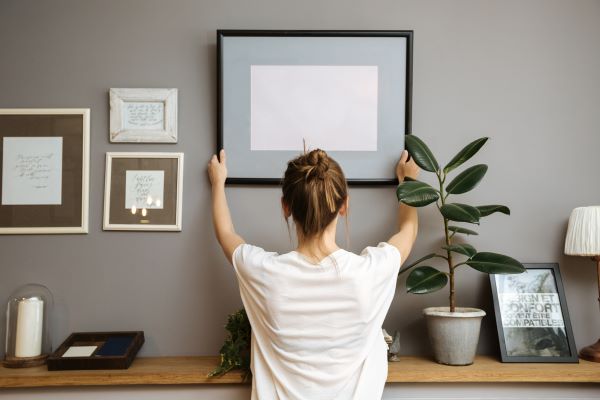
In other words, interior decorators create living spaces and workspaces that are beautiful – according to the desired aesthetic – while interior designers focus on the whole design of the space, including function as well as appearance. While one might say that interior decorating is an art, the field of interior design combines both art and science, as well as technical skills in drawing by hand or using computer-aided design (CAD) tools.
Of the two professions, interior design is larger in scope and encompasses work in the field of interior decorating and much more.
What Do Interior Designers Do?
Interior designers apply design principles to interior living and working spaces. Although you probably think of interior design work as pertaining to beautiful home remodeling projects, thanks to popular home improvement television shows, residential interior design is only part of a career in interior design.
Many interior designers and design firms work in the area of commercial interior design. Designing commercial interiors involves creating and developing spaces in corporate offices, healthcare facilities, hotels, banks, schools, retail stores, restaurants and other business environments.
The work of interior designers goes well beyond choosing color schemes and finding the perfect finishes to complete the look of a space. When you become an interior designer, you need to know construction practices and the techniques of modern architecture, especially when you’re hired for projects involving new builds or substantial renovations. You should be able to develop the sketches, plans and construction documents needed to make your designs a reality.

Work in interior design isn’t as simple or “fun” as many people believe. You’re not constantly shopping for decorative design elements or browsing the trendiest paint colors. Much of what you learn in design school has less to do with beautifying spaces and more to do with acquiring vital knowledge of construction codes and practices, inspection regulations and universal accessibility standards.
However, knowing that your work is helping design a functional and enjoyable interior space can be fulfilling – especially when your work involves choosing environmentally sustainable materials or emphasizing accessibility design to better accommodate individuals with disabilities and physical limitations.
Becoming an Interior Designer vs. Becoming an Interior Decorator
This distinction between the fields of interior design and interior decorating also leads to differences in the career path for attaining either of these roles.
Training and Credentials for the Interior Decorating Career Path
Officially, interior decorators are generally not required to have an undergraduate degree or state-issued licenses or credentials. However, many interior decorators choose to pursue some sort of voluntary credential to demonstrate their skill and commitment to the field. For example, organizations like Certified Interior Decorators (CID) International offer interior decorating courses and professional certification.
The CID Certification Course covers artistic decorative elements like floor planning and furniture placement, furniture styles, color schemes, wall coverings, window treatments, flooring options, lighting fixtures, fabrics selection, wall art and decorative finishes and accessories.
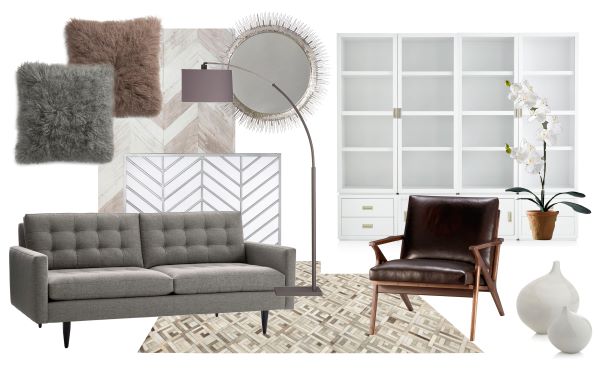
A course session on the basics of consulting, compensation and starting your own interior decorating business can provide valuable knowledge for the business side of working as an interior decorator.
Earning voluntary credentials from professional and trade associations is particularly valuable in the field of interior decorating precisely because no professional credentials are required. Having credentials and formal education, even one that doesn’t involve a college degree, gives you something to show to prospective employers or potential clients besides your professional portfolio of finished designs. This is your way of proving your skills and showing that your expertise is worth paying for.
Training and Credentials for a Professional Interior Designer
Interior designers, on the other hand, typically go through a more formalized entry process into the occupation. They typically earn a degree from an interior design school or degree program. In some states, anyone can call themselves an interior designer, while other states restrict the use of this job title to licensed professionals only.
If you’re not a licensed interior designer, you may be prohibited from referring to yourself as an “interior designer” at all in some states – which is one reason for the confusion between interior decorators and interior designers. Even if you are legally allowed to call yourself an “interior designer” without a license in your state, unlicensed designers may have a hard time competing with licensed design professionals for jobs and clients.
Getting licensed as an interior designer usually means having a degree from an approved college degree program, gaining professional experience, undergoing on-the-job training and passing a licensing exam.
In most states, the National Council for Interior Design Qualification (NCIDQ) Exam is administered for licensing purposes, the United States Bureau of Labor Statistics (BLS) reported. The NCIDQ exam consists of three parts: the Fundamentals Exam, the Professional Exam and the Practicum Exam.
Not all states use the National Council for Interior Design Qualification exam. Instead of the NCIDQ exam, people who want to become licensed interior designers in certain states may be required to take a state-approved exam. For example, Interior designers in California take a separate exam administered by the California Council for Interior Design Certification, according to the BLS. Aside from passing a licensing exam, new interior designers may need work experience to qualify for licensure. Often, state licensing agencies expect candidates for licensure to have at least two years of professional experience.
Like interior decorators, interior designers can also pursue optional professional certifications. For example, you may apply for membership with the International Interior Design Association. An interior design qualification can demonstrate the designer’s expertise in a specialized area within the interior design industry, such as architectural lighting, kitchen design, bathroom design, remodeling historic homes, healthcare interior design and energy and environmental design. To maintain professional certification, interior designers may need to complete a minimum number of continuing education opportunities.
Earning Potential for Interior Designers and Decorators
Considering the differences in both the scope of work in these two jobs and the training required for them, it makes sense that interior designers can generally expect to make more money than interior decorators. According to the salary research website PayScale, the average salary for interior decorators in 2022 was $39,746, compared to $51,754 for interior designers. Interior designers reported average base earnings that were 30% higher than interior decorators. The median salary the BLS reported for interior designers as of 2020 was $57,060 per year.
RELATED: Where Are the Best Paying Jobs With a Degree in Interior Design?
This significant difference in earning potential offers a clear path to improving your income. If you want to make more and don’t mind expanding your areas of consideration in your work beyond the scope of decorating for purely aesthetic purposes, one way you can earn more money is by getting the credentials to work as a full-fledged interior designer.
What Abilities Are Needed to Be an Interior Decorator or Designer?
Your innate sense of style is invaluable in fields like interior decorating and interior design, but it can only take you so far. You need other skill sets, including creative and technical skill sets, to excel in the interior design field. Through your interior design degree program, you can build up the skills you already have and learn brand new skills, both of which you can refine as you gain practical experience in your area of study.
Some of the skills needed for interior designers and decorators include creativity and artistic ability, visualization skills, technical skills, project management skills and problem-solving skills.
Creativity and Artistic Ability
Design is, above all, a creative venture. If you want to be an interior designer or decorator, you need a good eye for visual aesthetics and what design elements, colors, and finishes go well together. You may also need to draw on creativity in thinking about other ways to use or adjust the space itself.
Visualization Skills
As an interior designer, you need to be able to see the potential of a space – and that isn’t always obvious, especially when all you have are blank walls, beams or just blueprints. You need to be able to envision what the design you’re conceiving will look like in real life and then bring that visualization to life for prospective clients or employers with your hand-drawn or computer-created sketches.
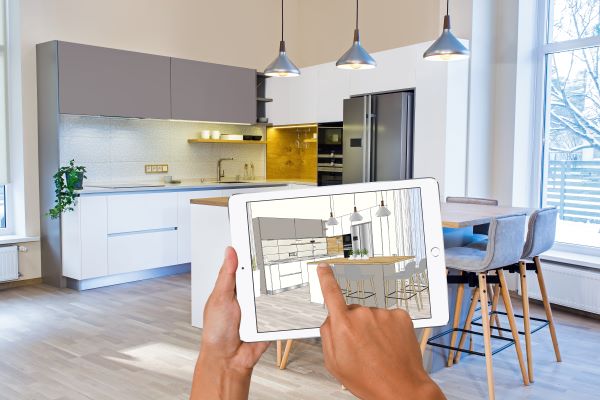
Technical Skills
The creative and visualizing work of an interior designer may seem glamorous, but the technical knowledge and skills these professionals use can seem less so. At some point, interior designers step away from color palettes and sample finishes and instead review building codes or launch the software through which they create computerized renderings of their design ideas. Many schools of interior design introduce students to the programs used in building information modeling and the technical skills required to use these programs effectively.
Project Management Skills
While an interior decorator just arrives at the end of a renovation or building project, an interior designer is involved earlier and in more aspects of the work. Good interior designers should have the project management skills to handle deadlines and schedules as well as budgets and the costs of labor and materials – not to mention their collaborations with other professionals involved in a project and the expectations of the client.
Problem Solving Skills

Television shows about home remodeling play up the drama, but what’s accurate about them is that projects in construction and remodeling often don’t go completely smoothly. When issues arise, like materials being unavailable or construction being delayed for various reasons, an interior designer needs to have the stability to handle the situation confidently and the skills to think resourcefully about possible solutions.
Do You Need a Degree to Be an Interior Designer or an Interior Decorator?
Which of these two careers you’re pursuing matters a lot. Generally, you don’t need a degree to be an interior decorator, while you do need a degree to be an interior designer.
Even if a degree isn’t mandatory, many interior decorators choose to earn one, most commonly from interior design schools or degree programs. Having a formal college education is a good credential for interior decorators to have and can help impress employers and clients. If you already have an appropriate degree as an interior decorator, you’re well-suited to pursue an interior designer license if you decide to pivot your career path in the future.
Of course, the content of your education itself can also make you a better decorator. Earning a college degree in a relevant subject exposes you to theoretical knowledge you otherwise wouldn’t have and trends and patterns you might not be aware of yet. As an example, consider the task of choosing paint and furnishing colors You may have plenty of subjective opinions about room and furnishing colors and how they make you, personally, feel. However, taking a course in color theory lets you take your knowledge of colors to the next level by covering topics like the temperature and warmth of colors, saturation, tints, shades, lightness and more, as well as RGB and Hex codes for colors.
Through your coursework in interior design programs, you can expect to develop skills, too – including technical skills in the tools and programs most widely used in the industry and soft skills, like communication skills and critical thinking skills, that a well-rounded interior designer should possess. The degree programs offered by some of the best interior design schools offer opportunities for independent research and internships that allow students to gain experience, often in a role with a design firm.
An internship experience is a great way to build practical skills in the field and begin networking with other designers. For some students of interior design, an internship may be the first step to full-time, permanent interior design jobs. Each designer may have their own individual style, but there’s a lot interns can learn from fellow designers – at design firms and in other industries – about design work itself and about the business side of handling client relations, managing design projects and running an interior design firm.

Over the course of your studies, you will have the chance to put your skills into practice and begin compiling a solid portfolio. Your portfolio should include the design sketches and completed project photos that demonstrate your best work (so far) and your potential.
Bachelor’s Degrees for Interior Designers
A bachelor’s degree is the minimum entry-level requirement for most interior designer jobs, according to the Bureau of Labor Statistics. This undergraduate degree is also the most common level of education for the occupation, according to O*NET, which reported that 86 percent of interior designers had a bachelor’s degree.
Another 5% of the profession reported having a post-baccalaureate certificate. Often, these certificates are used to help interior designers start their careers when they already have a bachelor’s degree in an unrelated field. A post-baccalaureate certificate may also serve the purpose of advancing an established interior designer’s knowledge and skills, particularly in a specific area like kitchen design or health facility design.
If you’re not ready to commit to earning a bachelor’s degree, you might consider an associate degree program in interior design, instead. This two-year program may not qualify you for licensure, but it can help you build a broad base of knowledge for an interior decorator role, and you could subsequently go back to school to finish your bachelor’s degree if desired.
Master’s Degrees for Interior Designers
Interior design programs are also offered at the master’s degree level. Like post-baccalaureate certificates, master’s degrees in interior design may be used to prepare job changers for a successful career in the field or to advance and refine the skills interior designers already have.
RELATED: How important is a Master’s in Interior Design? Will people hire me without one?
Graduate School Specializations in Interior Design
Some master’s degrees in this field are intended to advance a designer’s knowledge in a specialized area. Examples of specialized master’s degree options in interior design include architectural lighting design, healthcare interior design and sustainable interior environments.
Professional-focused interior design master’s degrees are often non-thesis programs, while Master of Fine Arts programs are more likely to require students to prepare a thesis of some sort.
Business-Focused Master’s Degrees for Interior Designers
Some interior designers go to graduate school with a slightly different focus. The business side of interior design work is important, particularly for self-employed designers – who, the BLS reported, comprise nearly a third of the occupation. An undergraduate degree in the arts or in design may not equip you with the skills to run and manage your own interior design business. Designers who want to strike out on their own or who have started a company but aren’t sure how to grow it successfully may decide to go back to school to better understand business.
RELATED: Do Interior Designers Mostly Work for Themselves?
A Master of Business Administration (MBA) is often a good place to start. A few universities even offer specialized options like a Master of Business in Architecture and Design.
The Best Degrees for Interior Designers
What program of study should aspiring designers pursue? A major in interior design specifically is an excellent choice for aspiring interior designers who are confident in their chosen career path. Many degree programs in interior design train design students according to a proven and accredited curriculum that prepares them for professional success.
Not all colleges have a dedicated interior design school or department, and not all aspiring designers want to be locked into a degree with relatively little versatility. If an interior design degree doesn’t seem like the right fit for you, other programs that might interest you include the fine arts or visual arts, fashion, architecture or interior architecture or business instead.
Bachelor’s Degree in Interior Design
If you’re going to college knowing that you want to be an interior designer or interior decorator, the most relevant major for you is interior design. At the undergraduate level, interior design degrees are awarded as Bachelor of Arts (BA), Bachelor of Science (BS) and Bachelor of Fine Arts (BFA) degrees. Any of these options can help you become an interior designer, so don’t get too hung up on whether a program awards a BA, BS or BFA.
A bachelor’s degree in interior design program offered by a design school or a college or university will typically cover the foundations of design theory and its applications in interior designing. Students will work on their drawing skills and develop the technical skills to use computer software for purposes like graphic representation and computer-aided design and modeling.
Coursework in building systems, materials, methods, building codes and technologies used for interior building is common at many interior design schools. These subjects are important to study because the plans created by interior designers aren’t limited to stylistic finishes but also include the electrical and partition layouts within the space.

Students of interior design spend a lot of time in design study courses, working on assignments that reflect real commercial and residential projects in interior design. Studying the history of art and architecture and modern trends in art and design is important for new interior designers. Some interior design programs also focus on challenges students will encounter once they are out in the professional world, including their legal and ethical responsibilities, the administrative work of running their own firm and the work involved in managing contracts and financial aspects of design work.
If you’re serious about your efforts to become an interior designer, don’t apply to just any interior design program. Applying to interior design programs that have earned interior design accreditation is ideal.
Hundreds of schools are accredited by or affiliated with professional associations and organizations in interior design, including the Council for Interior Design Accreditation, the National Association of Schools of Art and Design and the National Kitchen & Bath Association, according to the BLS.
Bachelor’s Degree in Fine Arts or Visual Art
Interior design schools and programs prepare students primarily for work specific to the interior design career. For students who aren’t completely sold on this path, a broader field of study can be appealing.
Students who major in fine arts or in visual art still study the design theory and art history aspects found in interior design, even though they may not delve into wall and flooring finishes, textile selection and decorative accessories specifically. They also put together a portfolio of their artistic creations – which, while they may not pertain to commercial and residential spaces directly, still serve to express the student’s artistic flair.
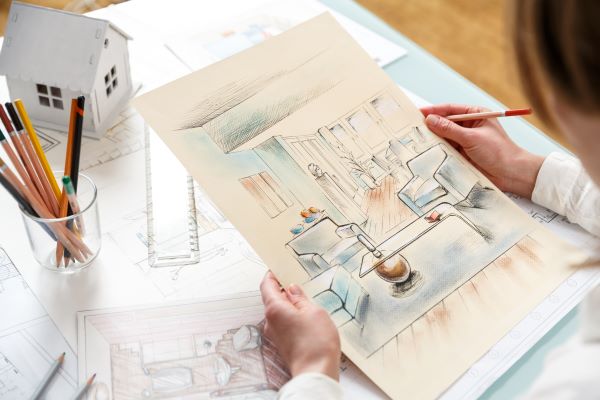
The interior design subject matter that is primarily missing from an art degree involves the technical aspects of space planning, drawing with computer-aided design software and learning building codes and processes. Still, fine arts subjects are common choices of study for many new interior designers, according to the BLS.
Bachelor’s Degree in Fashion
If interior design and decorating are the application of art to interior spaces, fashion is the application of art to physical appearances in terms of clothing, accessories, makeup, hairstyles and more. Given the similarities, not to mention the way that home design trends come into and go out of fashion – sometimes corresponding to clothing and accessory trends – it makes sense that fashion is another popular background for interior designers.
Fashion students may study design principles, textiles and materials, drawing and computer-aided design and three-dimensional design technology, just as interior design students do. More specialized topics in the study of fashion may include pattern and draping design and the history of costume instead of art and architecture.
Bachelor’s Degree in Architecture or Interior Architecture
Interior design is closely related to architecture, the art of designing buildings. Some students choose to pursue a degree in architecture or in interior architecture specifically so that they can better understand design knowledge from the building point of view.

Bachelor of Architecture degree programs typically require five years of undergraduate study. Students of architecture take classes in the foundations of architectural design, structural and building systems, environmental systems, art and architectural history and graphic representation through traditional media like hand-drawn sketches and digital media like computer-aided design software programs.
RELATED: What Is the Difference Between a Degree in Interior Design and Interior Architecture?
As in interior design school and fashion programs, hands-on work in the design studio tends to take up a good deal of the curriculum in an architecture degree program.
Bachelor’s Degree in Business or Marketing
Most interior designers have some kind of background in art, but some professionals come to the design industry from a business background rather than from design school. If you don’t intend to pursue licensure as an interior designer, you may decide that combining a business or marketing degree with your natural affinity for decorating will help you grow your interior decorating business.
A combination of a bachelor’s degree in business administration and a post-baccalaureate certificate in design, or a double-major in business and interior design, can be valuable to those looking to start an interior design business of their own.
Should You Become an Interior Designer?
There’s a lot to keep in mind when choosing a career path. You have already looked at the education, training and licensure requirements to become an interior designer, but before you commit to this career, you should consider factors like earning potential, the job market and the work environment and lifestyle that go along with this profession.
The Career Outlook for Interior Designers
The job outlook for interior designers is less than encouraging, particularly when compared with the average growth rate for jobs across the U.S. The Bureau of Labor Statistics has predicted that job opportunities for interior designers will “show little or no change” between 2020 and 2030, essentially reporting a 0% increase in jobs nationwide.
Don’t be too quick to let an unfavorable job growth rate stop you from becoming an interior designer. Even if most firms are unlikely to add new jobs for interior designers en masse over the next several years, individual jobs will still open up as established designers retire, change jobs or otherwise leave the workforce. Some companies will add positions, while others may downsize. Overall, the BLS reported that the number of job openings for interior designers each year during that decade is likely to be around 7,800.
RELATED: What Are the Pros and Cons of Pursuing a Degree in Interior Design?
This disappointing job outlook is bad news for aspiring interior designers seeking traditional employment in the top employing industries for this role, which include specialized design services, architectural and engineering services, wholesale trade and furniture stores. Jobs in established interior design firm settings aren’t likely to be especially plentiful over the next decade. Unfortunately, this means that getting your first interior design job out of school may be challenging, since recent graduates often start out at design firms and gain experience needed to be eligible for licensure in these settings.

Self-Employment in Interior Design
Not everyone in an interior design career is someone else’s employee. As the Bureau of Labor Statistics reported, 32 percent of interior designers are self-employed. Armed with an exceptional interior design portfolio, a good business sense, the capacity to build a strong rapport with potential clients and enough capital to launch their company, professionals with the required credentials to become an interior designer can launch an interior design business of their own. Most self-employed interior designers work for another firm or company first to gain some work experience and build up their reputation and professional portfolio before setting out on their own.
For many self-employed interior design professionals, referrals from past clients play a critical role in attracting future clients. It’s possible to have a highly successful career in interior designing even when the job outlook is poor, although there’s never a guarantee of success in running a business. If you want to become a self-employed interior designer, you may benefit by looking for a program that offers coursework in starting and managing an interior design firm. Some of the best interior design schools include these topics in the curriculum, but you can also build a business management background by earning a master’s degree in business.
Ultimately, only you can decide whether it’s worth it to become an interior designer. If you’re willing to put in the work to get licensed and you love the job of carrying out an interior design project, interior designer is an enjoyable career that allows you to make a decent living doing something you enjoy. The opportunity to earn money doing work you love is something special.
Even if you decide that an interior design career isn’t for you, nothing will stop you from continuing to practice your amateur work in interior decorating in your own space or loved ones’ spaces – or even turning this passion into a paying side hustle as an interior decorator.
Related Resources:
What Degree Do I Need to Become an Interior Designer?
Can I Become an Interior Designer Without a Degree?
What Kind of Bachelor’s Degree Should I Consider if I Want to Become an Interior Designer?
Do Different States Have Different Requirements for Interior Designers?
